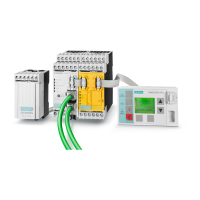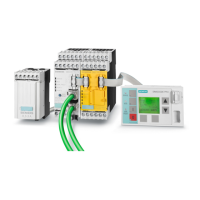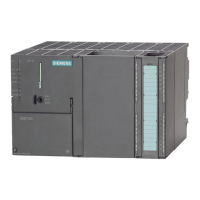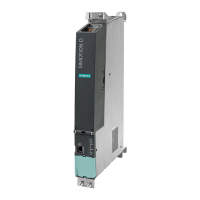System description
SIMOCODE pro
1-4 GWA 4NEB 631 6050-22 DS 03
Features
Multifunctional and electronic full motor protection for nominal motor
currents up to 820 A:
SIMOCODE pro provides comprehensive protection of the motor feeder by
means of a combination of delayable multi-level protection and monitoring
functions:
• Current-dependent electronic overload protection (CLASS 5 to 40)
(see Chapter 3.2 "Overload protection")
• Thermistor motor protection (see Chapter 3.5 "Thermistor protection")
• Phase failure/phase unbalance protection (see Chapter 3.3 "Unbalance
protection")
• Stalled rotor protection (see Chapter 3.4 "Stalled rotor protection")
• Monitoring of adjustable limits for the motor current
(see Chapter 5.2 "Current limit monitoring")
• Voltage monitoring (see Chapter 5.3 "Voltage monitoring")
• Power monitoring (see Chapter 5.5 "Active power monitoring")
• Monitoring of cos phi (non-load operation/load shedding)
(see Chapter 5.4 "Cos phi monitoring")
• Earth-fault monitoring (see Chapter 5.1 "Earth-fault monitoring")
• Temperature monitoring e.g. Pt100/Pt1000 (see Chapter 5.8 "Temperature
monitoring (analog)")
• Monitoring of operating hours (see Chapter 5.7.2 "Operating hours
monitoring")
• Motor stop time monitoring (see Chapter 5.7.3)
• Monitoring the number of starts within a specific period of time (see
Chapter 5.7.4).
• Safety-oriented tripping of motor feeders, e.g. failsafe tripping in the process
industry, locally or via PROFIBUS DP (see
"Failsafe Digital Module
SIMOCODE pro Safety").
Recording of measured curves:
SIMOCODE pro is able to record measured curves and can, for example,
illustrate the flow of the motor current during motor startup. See Chapter 8
"Analog value recording"
Flexible motor control with integrated control functions
(instead of extensive hardware interlocks):
SIMOCODE pro has many pre-defined, integrated motor control functions,
including all necessary connections and interlocks:
• Overload relay (see Chapter 4.2.3)
• Direct starter (see Chapter 4.2.4)
• Reverse starter (see Chapter 4.2.5)
• Star-delta starter, also with reversing starter (see Chapter 4.2.7 and
Chapter 4.2.8)

